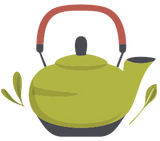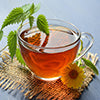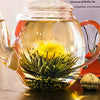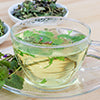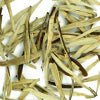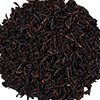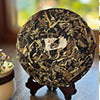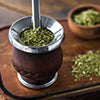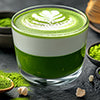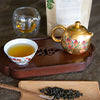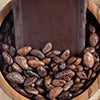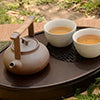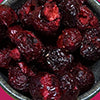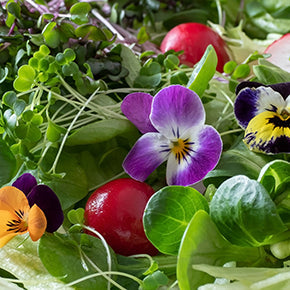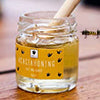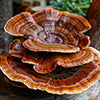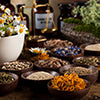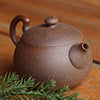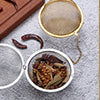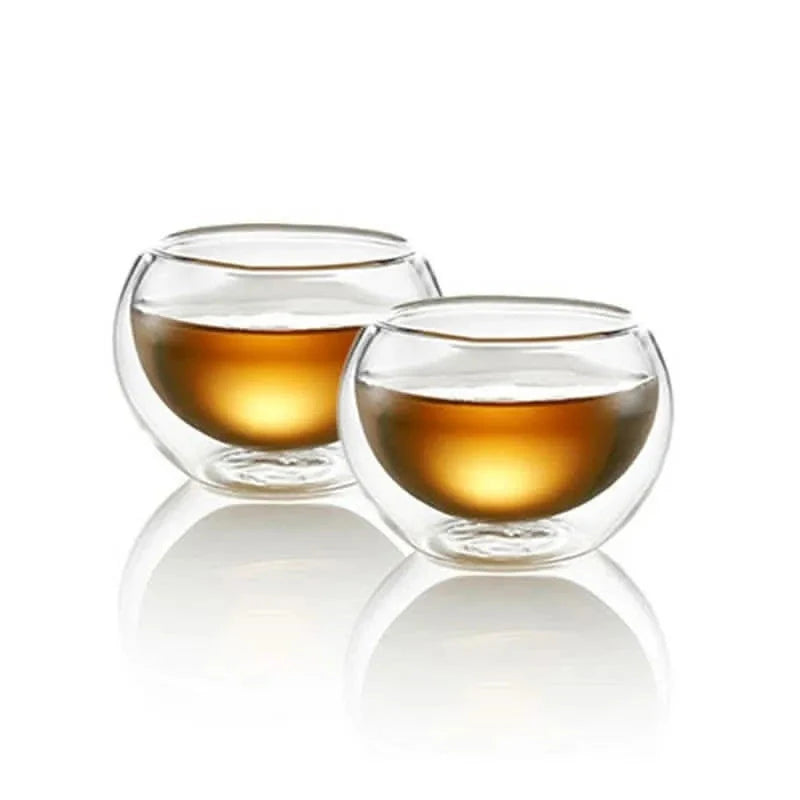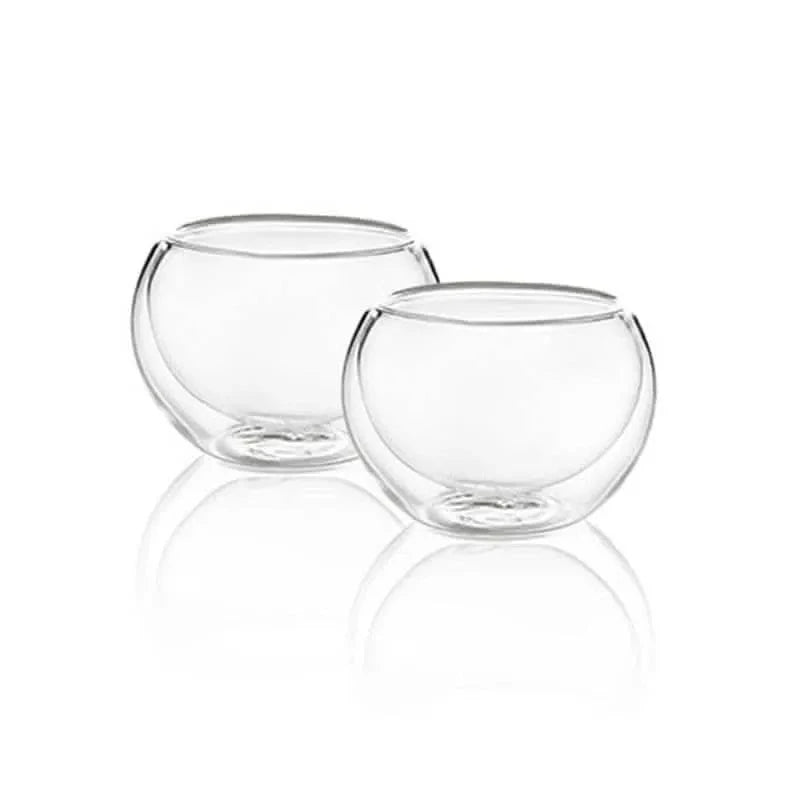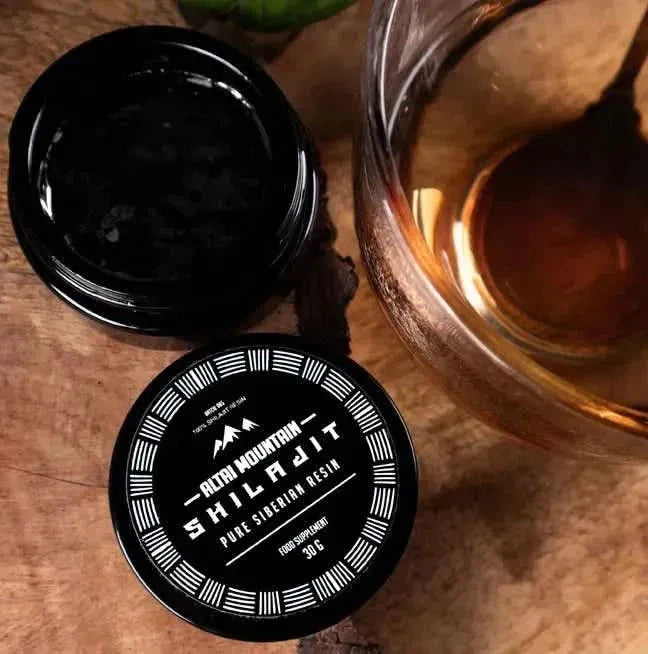Medicinal Mushrooms
Filter
Sort by:
Description
Medicinal mushrooms represent an elite category of functional fungi cultivated and harvested specifically for their therapeutic compounds and wellness applications. These specialized fungi develop complex bioactive molecules including beta-glucans, triterpenes, polysaccharides, and adaptogenic compounds through their unique growth processes. Distinguished from culinary mushrooms by their significantly higher concentration of medicinal compounds, these specimens undergo rigorous quality control measures to ensure optimal potency and purity. Harvested at precise developmental stages when bioactive compound profiles reach peak concentration, each variety possesses distinct therapeutic affinities and applications in traditional medicine systems. Processing methods include hot water extraction, alcohol extraction, and dual-extraction techniques that maximize the availability of both water-soluble and alcohol-soluble compounds. The mycelium (root structure) and fruiting bodies offer different compound profiles, with mature fruiting bodies generally containing higher concentrations of beneficial polysaccharides. Laboratory analysis confirms standardized levels of key compounds like beta-D-glucans, triterpenes, and polysaccharide peptides. These fungi have extensive documentation in traditional medical texts dating back thousands of years, particularly in Asian medical systems where they were reserved for nobility and spiritual practitioners. Modern extraction techniques utilize precise temperature controls, pressure-regulated environments, and specialized filtration systems to concentrate bioactive molecules while removing indigestible fibrous components. Quality indicators include organic cultivation practices, proper identification of fungal strain, controlled growing conditions, and comprehensive testing for contaminants.
Cultural
Comprehensive Guide to Therapeutic Mushroom Varieties
The medicinal mushroom kingdom encompasses numerous species with distinctive properties and applications across traditional and modern wellness practices.
Reishi (Ganoderma lucidum): The Supreme Protector
Often called the "mushroom of immortality," Reishi stands as perhaps the most revered medicinal mushroom in traditional Chinese medicine. Its distinctive kidney-shaped fruiting body features a glossy red-orange surface and woody texture. Reishi contains over 400 bioactive compounds including triterpenes, polysaccharides, and ganoderic acids that contribute to its bitter taste and powerful immune-modulating properties. Premium specimens develop naturally on hardwood trees over 3-6 months, allowing complete maturation of their complex triterpene profile. Different growing regions produce variations with subtle differences in compound ratiosJapanese Black Reishi and Chinese Red Reishi each offer unique therapeutic emphases. Wild-harvested specimens typically contain higher concentrations of active compounds than cultivated varieties, though standardized cultivation now produces consistent, high-quality alternatives.
Cordyceps (Cordyceps militaris): Energy and Vitality Enhancer
This remarkable fungus develops its medicinal compounds through a unique lifecycle. Cultivated Cordyceps militaris serves as the sustainable alternative to the rare wild Cordyceps sinensis. Its vibrant orange fruiting bodies contain cordycepin, adenosine, and specific polysaccharides that support cellular energy production. Athletes particularly value its capacity to enhance oxygen utilization and aerobic capacity. Traditional Tibetan and Chinese medicine practitioners have utilized cordyceps for centuries to address fatigue, support kidney function, and enhance reproductive health. Modern cultivation techniques have made this previously rare fungus more widely available while maintaining its core beneficial properties. Laboratory cultivation ensures consistent levels of cordycepin and adenosine, the compounds responsible for its energy-enhancing effects.
Lion's Mane (Hericium erinaceus): Cognitive Function Supporter
Immediately recognizable by its cascading white tendrils resembling a lion's mane, this mushroom contains unique compounds including erinacines and hericenones that specifically support nerve and brain health. These compounds stimulate nerve growth factor (NGF) production, supporting cognitive function and nervous system health. In traditional Japanese and Chinese medicine, Lion's Mane has been used for centuries to enhance mental clarity and support digestive health. Its primary beneficial compounds are both water and alcohol-soluble, making dual-extraction particularly important for full-spectrum preparations. Premium quality is indicated by the preservation of its delicate compounds through low-temperature drying and processing methods that prevent degradation of its neurotrophic factors.
Turkey Tail (Trametes versicolor): Immune System Modulator
Named for its distinctive fan-shaped, multi-colored rings resembling a turkey's tail, this mushroom contains some of the most thoroughly researched polysaccharides in mycology. Its protein-bound polysaccharides PSK and PSP have been extensively studied for immune system benefits. Japan and China have incorporated these compounds into their national healthcare systems as adjunctive therapies. Wild Turkey Tail grows abundantly on dead wood throughout temperate forests worldwide, with slight variations in appearance depending on the region. Quality specimens feature clearly defined concentric zones of different colors and complete extraction of its beta-glucan compounds. Modern research continues to validate traditional applications while discovering new potential benefits for this abundant medicinal fungus.
Benefits
Comprehensive Health Benefits of Therapeutic Fungi
Medicinal mushrooms offer a remarkable array of evidence-backed health benefits through their complex bioactive compounds and traditional applications.
Advanced Immune System Regulation and Enhancement
The beta-glucan polysaccharides found in medicinal mushrooms demonstrate remarkable immunomodulating properties. These complex carbohydrate structures interact with immune cell receptors, effectively "training" the immune system for optimal response. Research indicates they enhance natural killer cell activity, macrophage function, and appropriate cytokine production. This balanced immune modulation helps maintain resilience against seasonal challenges while preventing excessive immune responses. Reishi and Turkey Tail particularly excel in this capacity through their beta-1,3/1,6-D-glucan structures that specifically target immune cell activation. These compounds work alongside triterpenes and proteoglycans to create a comprehensive approach to immune health that addresses both immediate response and long-term resilience.
Cognitive Function and Neurological Health Support
Certain medicinal mushrooms contain neuroactive compounds that directly benefit brain and nervous system function. Lion's Mane mushroom stands at the forefront with its unique hericenones and erinacines that stimulate nerve growth factor (NGF) production. This protein plays a crucial role in neuron maintenance, growth, and protection throughout the central and peripheral nervous systems. Research suggests these compounds support cognitive clarity, memory formation, and overall brain health. The neuroprotective effects extend to supporting proper myelination of nerve cells, enhancing signal transmission efficiency. Regular consumption demonstrates cumulative benefits for maintaining cognitive function and supporting healthy neurological processes during aging.
Cellular Energy Production and Physical Performance
Cordyceps mushroom contains specific nucleosides and polysaccharides that enhance cellular energy metabolism. These compounds increase ATP productionthe primary energy currency of cellsby improving oxygen utilization efficiency. Research indicates they enhance the activity of mitochondrial enzymes involved in energy conversion while promoting healthy glucose metabolism. Athletes particularly benefit from these effects through improved oxygen utilization, enhanced endurance, and reduced recovery time after intense exercise. The adaptogenic properties further help maintain energy homeostasis during periods of physical stress. Traditional applications for combating fatigue and enhancing stamina have been validated by modern research showing measurable improvements in aerobic capacity and energy output.
Stress Adaptation and Hormonal Balance
Many medicinal mushrooms function as adaptogensnatural substances that help the body maintain homeostasis during physical, chemical, and biological stress. Reishi particularly excels in this category by supporting adrenal function and helping regulate cortisol levels during periods of stress. Its triterpenes appear to modulate the hypothalamic-pituitary-adrenal (HPA) axis, supporting balanced stress hormone production. Research indicates these adaptogenic properties help maintain healthy sleep patterns, mental clarity during stress, and overall resilience. The cumulative effect supports the body's natural ability to adapt to various stressors while maintaining optimal function across multiple bodily systems.
Instruction
Optimal Preparation Methods for Maximum Bioavailability
Proper extraction techniques maximize the therapeutic potential of medicinal mushrooms by ensuring optimal absorption of their complex bioactive compounds.
Dual-Extraction Technology for Complete Compound Spectrum
The most comprehensive method for accessing medicinal mushrooms' full compound profile involves a two-stage process targeting both water-soluble and alcohol-soluble components. Begin with alcohol extraction (typically 30-60% ethanol) for 4-6 weeks to extract triterpenes, sterols, and certain alkaloids. Follow with hot water extraction at 80-100°C for 60-90 minutes to isolate beta-glucans, proteoglycans, and polysaccharides. This dual-extraction approach ensures maximum bioavailability of the complete compound spectrum. Commercial preparations utilizing this method typically indicate the extraction ratio (such as 8:1 or 10:1), reflecting the concentration factor from raw material to extract. Quality dual-extracts maintain balanced ratios of both extraction types, preserving the natural synergy between compound classes.
Specialized Hot Water Extraction for Polysaccharide Concentration
For maximizing beta-glucan content, extended hot water extraction represents the traditional and most effective method. This process requires maintaining temperatures between 80-100°C for 60-180 minutes to break down the fungal cell walls and release medicinal polysaccharides. Multiple extraction cycles with fresh water may be employed to maximize yield. The resulting liquid is then concentrated through gentle evaporation to preserve heat-sensitive compounds. This method particularly benefits Reishi, Turkey Tail, and Maitake preparations where the beta-glucan content provides primary therapeutic value. Quality indicators include deep amber color, naturally bitter taste (for certain species), and laboratory verification of beta-glucan percentage.
Mycelium vs. Fruiting Body Considerations for Specific Applications
Different parts of the fungal organism offer distinct compound profiles suitable for various applications. Fruiting bodies generally contain higher concentrations of beta-glucans and triterpenes, making them preferred for immune support applications. Mycelium (the root-like structure) often contains unique compounds not present in fruiting bodies, including valuable extracellular metabolites. Some species, like Cordyceps, produce significant cordycepin in mycelial form. Quality producers clearly specify which portion is used in their extracts. Premium preparations may incorporate both components to provide the full spectrum of beneficial compounds as they naturally occur throughout the fungal lifecycle.
Proper Storage and Administration for Potency Preservation
Medicinal mushroom extracts require specific storage conditions to maintain their therapeutic potency. Store liquid extracts in amber glass bottles away from direct light at room temperature or cooler. Powdered extracts should be kept in airtight containers in cool, dry locations to prevent moisture absorption and compound degradation. Refrigeration extends shelf life for most preparations but isn't necessary for dried products stored properly. Tinctures typically remain stable for 2-3 years, while properly stored powdered extracts maintain potency for 1-2 years. For maximum absorption, consume liquid extracts sublingually, holding briefly before swallowing. Powdered extracts are best taken with meals containing healthy fats to enhance absorption of fat-soluble components.
